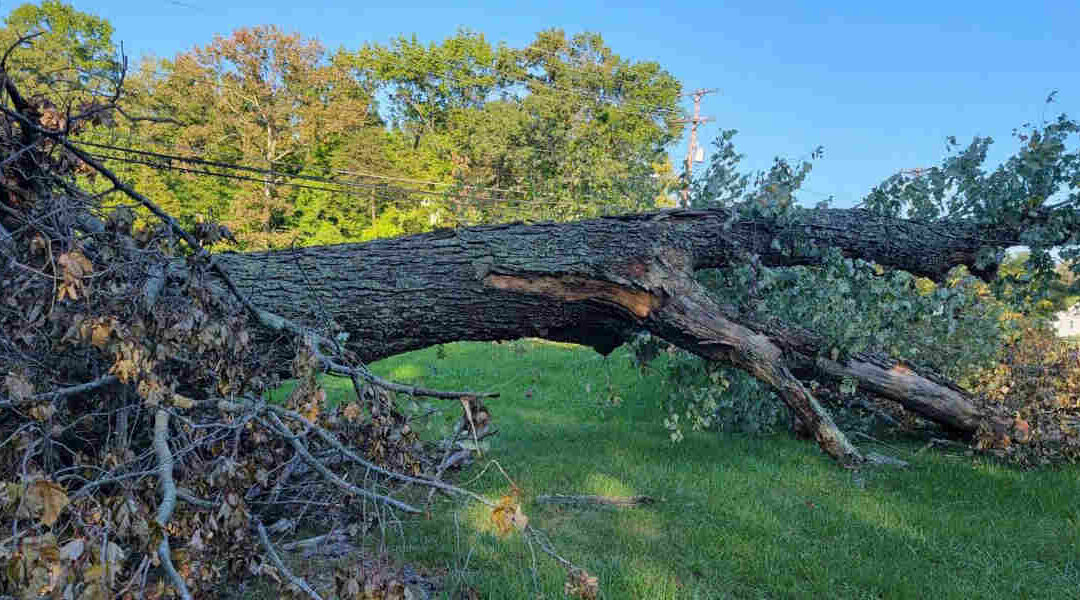As a tree owner, tree maintenance plays a crucial role in keeping your trees healthy, safe, and vibrant. Part of that maintenance involves regular pruning, fertilization, and monitoring for signs of dead branches, pests, or disease.
As a top-rated tree service company in Mechanicsville, Maryland, the Hernandez Complete Tree Service crew explores dead branch identification. Keep reading to learn how to identify dead branches.
Clinging Dead Leaves
Deciduous trees usually shed their leaves in the fall. If your deciduous tree retains its dead leaves when other branches have lost theirs, the branch could be dead. Leaves on a dead branch typically won’t drop.
They often persist for months or detach only when harsh winds tear the blade away, leaving the leaf stem attached to its node.
Dry or Withered Buds
A tree care expert pruning your tree can often tell a dead branch by looking at the condition of the buds. Healthy branches have robust, vibrant buds with a smooth outer cover protecting them. Dry, shriveled, or discolored buds point to a branch not receiving the water and nutrients it needs.
A branch showing these signs probably needs pruning, indicating it is dead.
Dry, Fragile Twigs
Healthy branches and twigs exhibit natural flexibility. A twig connected to a dead branch, on the other hand, typically dries out and becomes rigid. The simple snap test below should help determine the overall health of the twig or branch:
Hold a small twig or branch with both hands, about six inches apart and bend it gently.
A dead branch or twig will snap easily, lacking flexibility, while a healthy one will bend without breaking.
Pest Infestation
Knowing how to identify dead branches may involve knowing how to identify opportunistic pests. Trees host various small creatures that inhabit and feed within their branches.
However, you want to keep an eye out for insects like leaf-cutting bees, carpenter ants, or giant bark aphids that love dead or stressed trees and branches. As such, spotting dead branches may entail inspecting your tree for an influx of these pests underneath a branch or maybe around the trunk.
Dry Bark
As mentioned earlier, a healthy branch exhibits some flexibility and appears green. A dead branch will often have dry bark, signaling a lack of moisture and vitality. If your tree has dry bark, schedule an inspection for potential removal.
Fungal Growth
While growths on your tree shouldn’t always alarm you, spare some time to examine any abnormal growths. Turkey tail fungus, for example, loves to grow on dead trees, stumps, and branches.
Mushrooms, on the other hand, will often show up after the branch has been dead for some time. Peeling some bark may help in identifying tree branch decay.
Less Activity
If a branch displays minimal to no signs of activity, such as lacking new buds or leaves, containing dead twigs, or any of the symptoms above, it may be dead or dying and in need of pruning. The branch may also appear more grayish or duller than the rest of the tree.
If you need help recognizing dead tree limbs, contact a certified arborist.
Trust Your Local Tree Experts for Assistance
Now that you know how to identify dead branches, you know when to call a tree care expert for deadwood detection. At Hernandez Complete Tree Service, we believe every homeowner should enjoy the beauty of a well-maintained lawn. We specialize in various tree services, including:
- Tree trimming and pruning
- Tree removal
- Stump grinding and root removal
- Emergency tree service
Call Hernandez Complete Tree Service at (240) 299-4639 to request a free estimate for tree service in Mechanicsville, Maryland, and beyond. Reach out for newly planted tree care tips.


